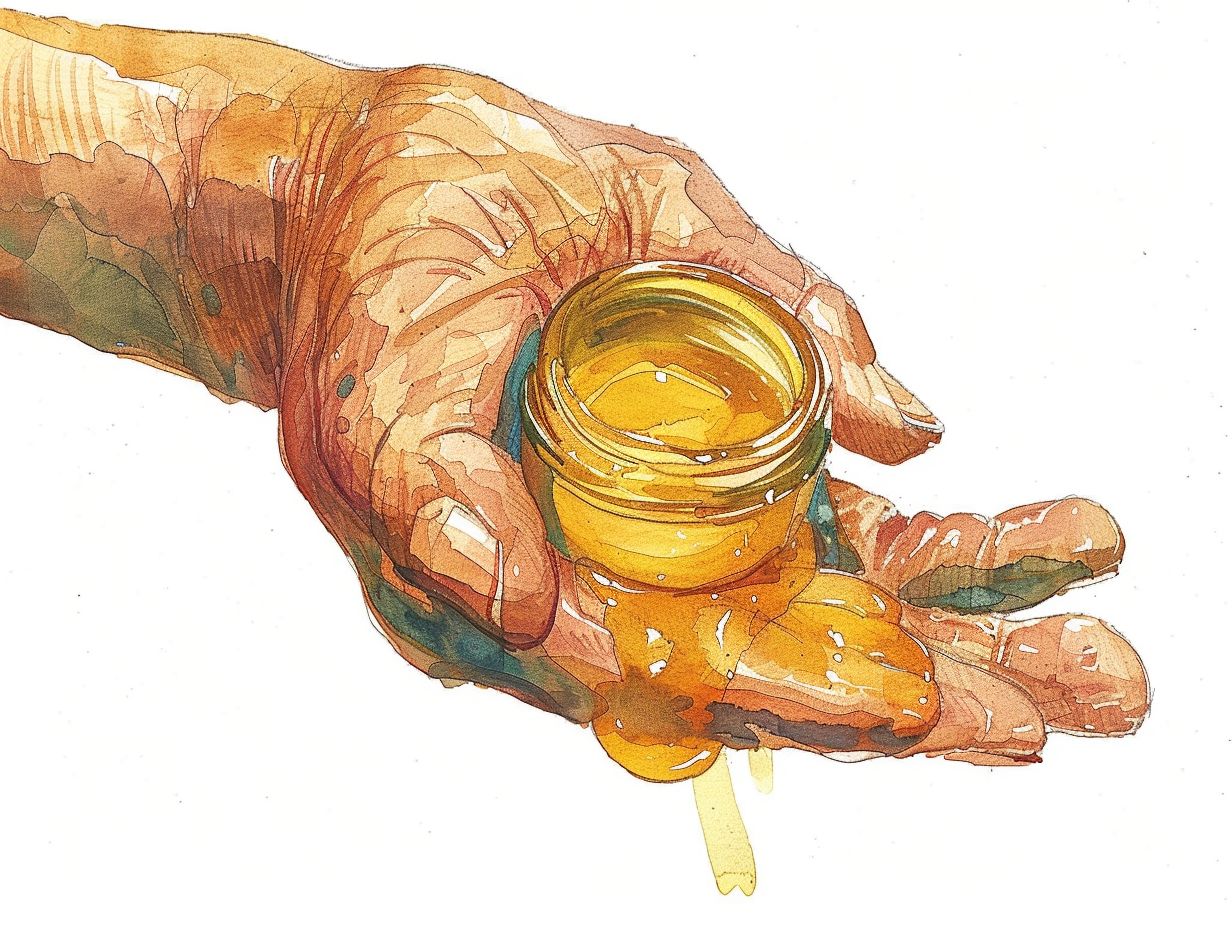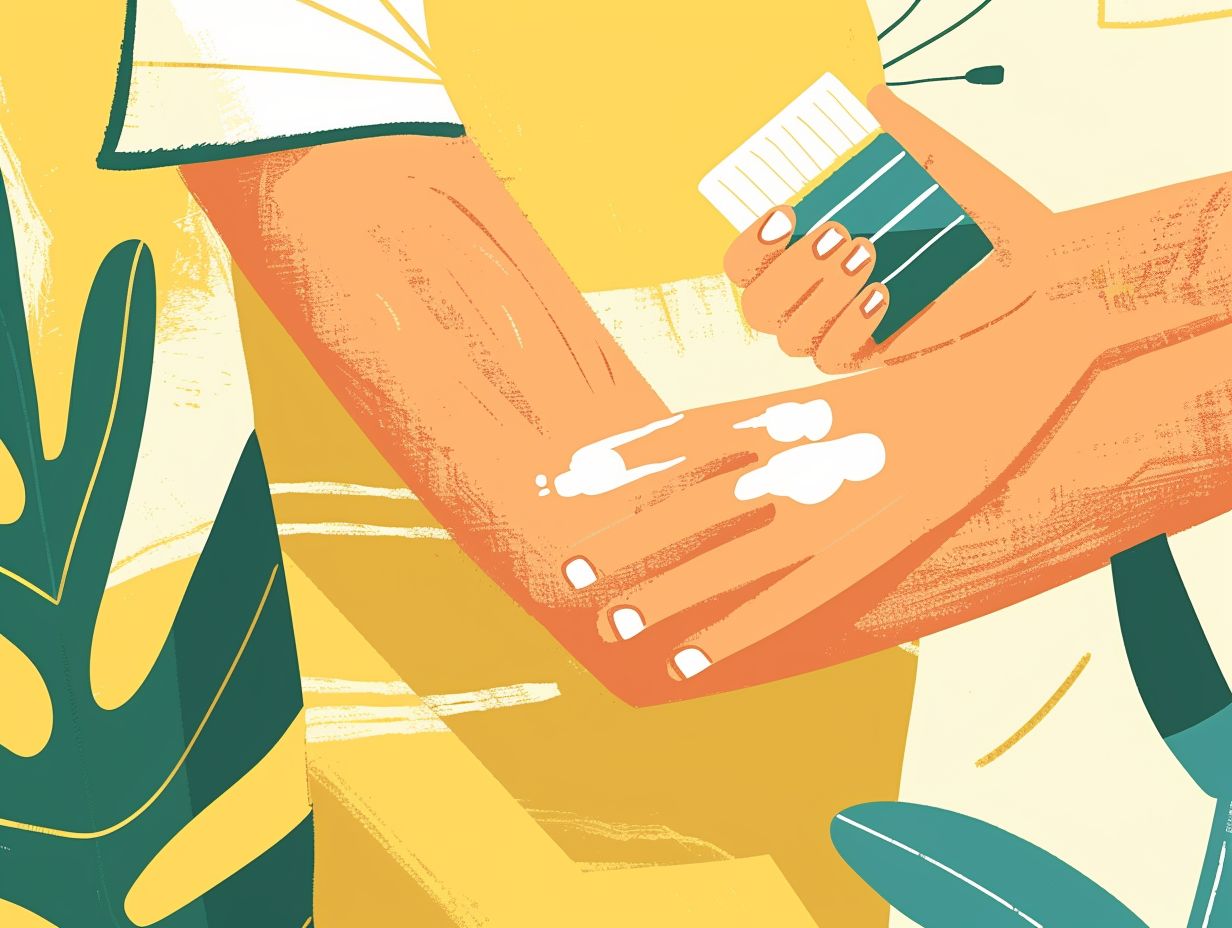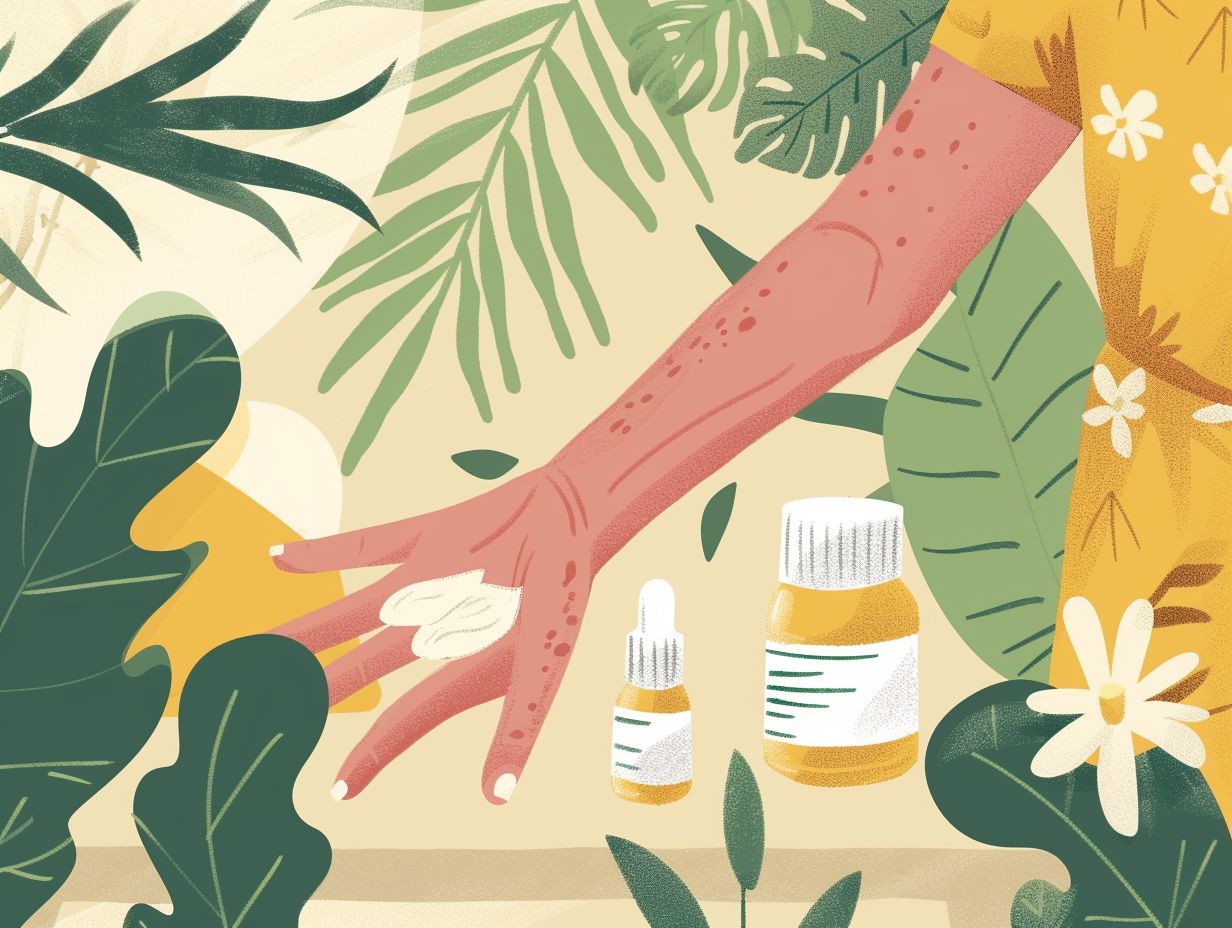Do you find yourself experiencing pain and tenderness in your elbow, especially after activities involving gripping or lifting? You might be suffering from tennis elbow, a common condition that affects many individuals, whether or not they play tennis.
Let’s dive into the causes, symptoms, diagnosis, and treatment options for tennis elbow. Effective home remedies can help alleviate discomfort and promote healing. If you’re looking for ways to find relief from tennis elbow, keep reading to discover some helpful tips and strategies.
What Is Tennis Elbow?

You might have heard of tennis elbow, also known as lateral epicondylitis. It’s a real pain in the neck – or rather, the outer part of your elbow. This pesky condition messes with the muscles and tendons of your forearm, especially the ones that attach to the lateral epicondyle.
Chances are, you’ve got tennis elbow from all that repetitive motion – like swinging a tennis racket, hence the name. All that strain on your muscles and tendons can cause inflammation and tiny tears, leaving you with a throbbing pain and limited range of motion. It’s crucial to give that overworked arm some rest, do some stretching, and hit up those strengthening exercises to keep things in top shape. Ignoring those tennis elbow symptoms can spell trouble down the line, leading to chronic issues that mess with your overall health and mobility.
What Causes Tennis Elbow?
Your tennis elbow might be caused by a mix of factors, but one big culprit is overusing your arm and wrist. If you’re not using the right techniques during your physical activities, you could be setting yourself up for trouble.
When you keep stressing out your arm and wrist with repetitive movements, like playing a ton of racquet sports or doing lots of gripping motions, you’re putting your elbow tendons at risk for damage. That damage can lead to inflammation in the tendons, which brings on pain and tenderness on the outer side of your elbow. Inflammation is a big player in the pain game with tennis elbow, so it’s super important to find ways to ease that pain and let your muscles heal up right.
1. Overuse of Arm and Wrist
When you’re constantly using your arm and wrist, especially in sports like tennis, you risk straining those muscles and tendons, potentially causing tennis elbow.
This strain usually happens because you’re doing the same motions over and over again, like swinging a racket or throwing a ball. All that repetitive stress can lead to inflammation and pain.
In cases like this, it’s super important to manage your pain properly to prevent more damage and help yourself recover. If you brush off those early signs of strain, you might just make things worse and end up with a harder-to-treat issue. So, it’s crucial to pay attention to your body, give it the rest it needs, and take care of it to avoid any long-term problems with arm and wrist injuries.
2. Improper Technique
When you’re diving into physical tasks or sports activities, using the wrong techniques can really do a number on your arm and joints, upping the chances of you ending up with a case of tennis elbow.
Tennis elbow is no joke – it brings on pain and inflammation on the outer part of your elbow, especially if you’re into activities that involve lots of gripping and wrist movements. If you keep putting that improper form pressure on your tendons, you might end up with tiny tears that spell out discomfort and limited mobility.
To steer clear of these pesky injuries, make sure you’re all about that proper form, rocking ergonomic equipment, and throwing some regular stretching exercises into the mix to keep your arm and joint flexible and strong. These prevention tactics are your best bet to avoid the downside of tennis elbow.
3. Age and Gender
You might find that certain age groups and genders are more likely to end up dealing with tennis elbow, thanks to differences in muscle strengths and how prone they are to injuries.
For example, if you’re in the middle-aged bracket and find yourself making repetitive arm movements, like swinging that tennis racquet, you’re more likely to be at risk for tennis elbow compared to the younger crowd. Men tend to have more upper body muscle mass, which means they could also be more susceptible to this condition. Knowing these risk factors and how they impact muscles like the extensor carpi radialis brevis and extensor carpi radialis longus can be key in preventing and managing tennis elbow.
What Are the Symptoms of Tennis Elbow?
Recognizing the symptoms of tennis elbow is super important for catching it early and getting some relief from the pain. If you’ve got tennis elbow, you might notice some common signs like pain and tenderness in your arm, especially around the outer elbow.
The pain can get worse when you’re gripping or lifting stuff, and you might feel like your hands are weaker or that your elbow joint doesn’t move as well. In serious cases, you might even see some swelling and inflammation, which can make everyday tasks like turning a doorknob or shaking hands a real hassle. It’s key to spot these symptoms early on because getting the right exercises and taking a break can help prevent more damage and speed up the recovery of your arm and joint.
1. Pain and Tenderness
If you’re dealing with tennis elbow, you might notice some persistent pain and tenderness on the outer part of your elbow, making everyday activities a bit uncomfortable. You may also feel some achiness that gets worse when you grip objects or lift weights. This discomfort can be a real nuisance, especially during repetitive wrist movements like typing or playing sports.
To ease the pain, you can try out different methods like resting, using ice therapy, and doing exercises to beef up those forearm muscles. Addressing these symptoms early on is key to stopping the condition from getting worse and boosting your overall comfort and mobility.
2. Weakness in the Affected Arm

If you’re feeling weakness in your affected arm, that’s a telltale sign of tennis elbow. It means those muscles could use some extra love and attention through targeted strengthening exercises to help speed up your recovery.
This weakness usually crops up because your poor arm and forearm muscles are getting a serious workout from all that gripping, especially when playing tennis. The constant strain they face can lead to discomfort, pain, and a noticeable drop in strength in that arm. That’s where strengthening exercises come in clutch – they’re key to getting those muscles back in fighting shape, boosting their flexibility, and enhancing overall function.
By dedicating some time to specific exercises that focus on the forearm and surrounding muscles, you can give your tennis elbow the boot. These exercises help the healing process, ease symptoms, and lower the chances of a repeat performance in the future.
3. Difficulty Gripping Objects
If you’re dealing with tennis elbow, you might find it tough to grab things because your arm and wrist just don’t move like they used to.
This lack of mobility can really throw a wrench in your daily routine, from jotting down notes and cooking to even just trying to open a stubborn jar or sip from a cup. Struggling to get a good grip not only slows you down but also puts a damper on your quality of life.
To prevent things from getting worse and get back to your usual self, it’s crucial to tackle these mobility and flexibility issues head-on. Doing strengthening exercises and following the right rehab techniques can be game-changers in maintaining or boosting your grip strength, helping you take charge of your everyday tasks again.
How Is Tennis Elbow Diagnosed?
When diagnosing tennis elbow, healthcare professionals typically start by giving your affected arm and joint a thorough once-over, checking for pain points, range of motion issues, and muscle strength.
To nail down the extent of the damage and locate the source of your discomfort, the pros have a few tricks up their sleeves. During the evaluation, they might press on certain areas to find those tender spots that scream tennis elbow. They’ll also test your grip strength, flexibility, and run you through some specific assessments like the Cozen’s test or Mill’s test to confirm what’s going on. Sometimes, they might bring in the big guns like X-rays or MRIs to rule out any other underlying problems and get a full picture of your joint health.
What Are the Treatment Options for Tennis Elbow?
When dealing with tennis elbow, your treatment options all revolve around relieving pain, reducing inflammation, and getting you back to full strength.
Rest is your best friend during the healing process, giving those injured tendons the time they need to repair and get stronger. Don’t underestimate the power of physical therapy either – it’s crucial for rehabilitating your arm, boosting flexibility, and rebuilding muscle strength.
Making some changes to your daily habits, like adjusting your ergonomics and avoiding activities that worsen the pain, can also go a long way in preventing further damage. And don’t forget to tackle that inflammation head-on! Ice therapy, NSAIDs, or corticosteroid injections are all options to help bring down the swelling and discomfort.
Taking a well-rounded approach that addresses both your symptoms and the root causes of your tennis elbow is key. By doing so, you can effectively manage the condition and set yourself up for a strong, lasting recovery.
1. Rest and Ice
Rest and ice therapy are essential components of tennis elbow treatment, helping you reduce pain and inflammation in the affected area.
You need to prioritize rest to give the damaged tissues in your elbow a chance to heal properly. Ice therapy is also crucial for minimizing swelling and soothing discomfort. When you use both of these treatments together, you can make a real difference in alleviating the symptoms of tennis elbow. They work by boosting circulation and reducing inflammation in your elbow.
To do ice therapy, grab a cold pack or a bag of ice, wrap it in a towel, and gently press it against the tender area for about 15-20 minutes at a time, several times a day. This process is great for numbing the pain and effectively controlling the inflammation.
2. Physical Therapy
In your journey to recover from tennis elbow, physical therapy is your trusty sidekick, offering up targeted exercises to beef up your arm muscles and get those joints moving smoothly.
These exercises are like magic tricks for your elbow, not only easing the pain and swelling but also helping you regain full range of motion. From wrist curls to forearm twists to gentle stretches, these therapeutic movements are your secret weapons for building arm strength and flexibility.
Your physical therapist will be your personal coach, guiding you on when to level up the intensity and frequency of these exercises. With their help, you’ll see improvements in muscle endurance and speedier healing. Plus, throwing in some joint mobilization techniques can give your recovery an extra boost and keep you safe from future injuries.
3. Braces and Straps
When you’re dealing with tennis elbow, using braces and straps can be a game-changer for your arm. They give that extra support your muscles need, easing the strain and helping manage the pain.
These nifty accessories are made to stabilize your forearm muscles and tendons, which can get overworked and inflamed from repetitive movements. The braces and straps offer targeted compression to ease any discomfort and speed up the healing process in that area.
Wearing them the right way can also help keep your arm in the proper position during activities, stopping the condition from getting worse. Just make sure the brace fits snugly but not too tight – finding that sweet spot will give you all the support you need without cutting off your circulation.
4. Medications

If you’re dealing with tennis elbow, your healthcare provider might suggest medications like nonsteroidal anti-inflammatory drugs (NSAIDs) to help ease the pain and reduce inflammation.
These meds do their magic by targeting enzymes that produce prostaglandins, those troublemaking chemicals in your body that bring on pain and swelling. By putting a lid on these enzymes, NSAIDs can give you some sweet relief from the ache and make you feel more comfortable.
Your doctor might advise taking NSAIDs with some food to keep those tummy troubles at bay. It’s crucial to stick to the dosage your healthcare provider gives you to get the best results and avoid any nasty side effects on your health.
5. Steroid Injections
Sometimes, healthcare providers might suggest steroid injections to help with severe pain and inflammation if you’re dealing with stubborn tennis elbow symptoms.
With this treatment, they’ll inject corticosteroids right into the area around your elbow joint. These injections can work fast to target the pain and swelling, calming down the hyperactive immune response causing all the trouble. By delivering a strong anti-inflammatory medicine straight to the injury site, steroid injections can really help ease the pain and kickstart the healing process. But hey, while this method can bring some serious relief for your tennis elbow, it’s good to keep in mind that there are potential risks that come with steroid therapy, so it’s something to think about.
Are There Any Home Remedies for Tennis Elbow?
You can turn to home remedies as a natural and easy way to deal with tennis elbow symptoms, finding relief through self-care methods and alternative therapies. These remedies usually involve simple yet effective techniques that you can easily try at home.
For example, you can apply ice packs to reduce inflammation or do gentle stretching exercises to boost flexibility and strength in the affected area. Natural remedies like turmeric paste, ginger compresses, and essential oils like lavender or peppermint can bring anti-inflammatory benefits and help alleviate pain.
By making these remedies a part of your regular routine, you can play an active role in your healing journey and support your overall well-being.
1. Rest and Modify Activities
To treat your tennis elbow at home, it’s important to give your affected arm some rest and adjust your daily activities. This helps the muscles recover and heal effectively.
You can also make lifestyle changes to speed up the healing process. Avoid putting repetitive stress on your elbow, make sure your workstations are ergonomically sound, and try some gentle stretching exercises to keep your elbow flexible and reduce stiffness. These adjustments won’t just help you recover quicker from tennis elbow but also help prevent it from coming back.
Taking a holistic approach to your well-being is key. This means eating a balanced diet, staying hydrated, and managing your stress levels. By focusing on your overall health, you can support your body’s healing process and maintain long-term joint health.
2. Apply Ice or Heat
When dealing with tennis elbow discomfort, consider alternating between ice packs and heat therapy at home. Ice packs are great for reducing swelling and numbing the area, especially after activities that cause pain. Try applying an ice pack for 15-20 minutes to help shrink blood vessels and decrease blood flow, ultimately easing inflammation.
Switch it up with heat therapy to improve blood circulation, relax those muscles, and boost healing. Use a warm compress or heating pad for 15-20 minutes to relieve stiffness and boost flexibility in your elbow.
Just be sure to wrap the ice pack or heating pad in a towel to protect your skin, and avoid extreme temperatures to prevent any burns.
3. Stretching and Strengthening Exercises
Incorporating stretching and strengthening exercises into your routine can enhance flexibility and muscle strength in your arm and joint, supporting the recovery process for tennis elbow.
Flexibility and muscle strength are crucial for managing and preventing tennis elbow. Stretching exercises like wrist flexor stretches and tricep stretches can help relieve tension in your affected muscles and improve your joint’s range of motion. Strengthening routines, such as wrist curls and elbow flexion exercises, target the specific muscles involved in tennis elbow, promoting overall joint stability.
If you’re consistent with practicing these exercises at home, you can help rehabilitate the affected area and reduce the risk of future injuries.
4. Use Essential Oils
You can enhance your relaxation and support the healing process for your tennis elbow by using essential oils like lavender or peppermint in aromatherapy.
Aromatherapy has become popular for its focus on natural plant extracts that can complement traditional medical treatments. The calming effects of essential oils are great for easing pain and reducing inflammation that often comes with conditions like tennis elbow. When you incorporate aromatherapy into your holistic healing routine, you’ll not only find physical relief but also mental relaxation. These essential oils don’t just cover up symptoms; they actually work in harmony with your body’s natural healing processes to promote overall wellbeing.
5. Try Acupuncture

If you’re dealing with tennis elbow symptoms, consider giving acupuncture a shot as an alternative therapy. This ancient practice works wonders by relieving muscle tension, boosting blood flow, and aiding in your recovery.
By zeroing in on specific acupuncture points, this technique can kickstart your body’s natural healing process. That means less inflammation and more relief from that pesky tennis elbow pain. The best part? The insertion of those super-thin needles can release endorphins, your body’s very own painkillers, to help ease your discomfort and speed up muscle recovery. Plus, acupuncture’s ability to improve blood circulation means your muscles get more of the nutrients and oxygen they need, helping them heal faster and reducing any stiffness in your elbow joint.
Frequently Asked Questions
What are some effective home remedies for tennis elbow?
Some effective home remedies for tennis elbow include applying ice packs, rest and stretching exercises, wearing a brace or strap, and using over-the-counter pain relievers.
How can icing help with tennis elbow?
Icing can help reduce pain and swelling in the affected area. It also helps to numb the area, providing relief from discomfort.
Is rest important for treating tennis elbow?
Yes, rest is crucial for the healing process of tennis elbow. It gives the affected muscles and tendons time to recover and reduces further strain on the area.
Can stretching exercises help with tennis elbow?
Yes, stretching exercises can help improve flexibility and reduce stiffness in the muscles and tendons affected by tennis elbow.
How can a brace or strap aid in the treatment of tennis elbow?
A brace or strap can provide support and compression to the affected area, reducing strain on the muscles and tendons and promoting healing.
Are there any natural home remedies for tennis elbow?
Yes, some natural remedies for tennis elbow include using essential oils, herbal remedies, and incorporating anti-inflammatory foods into your diet.

